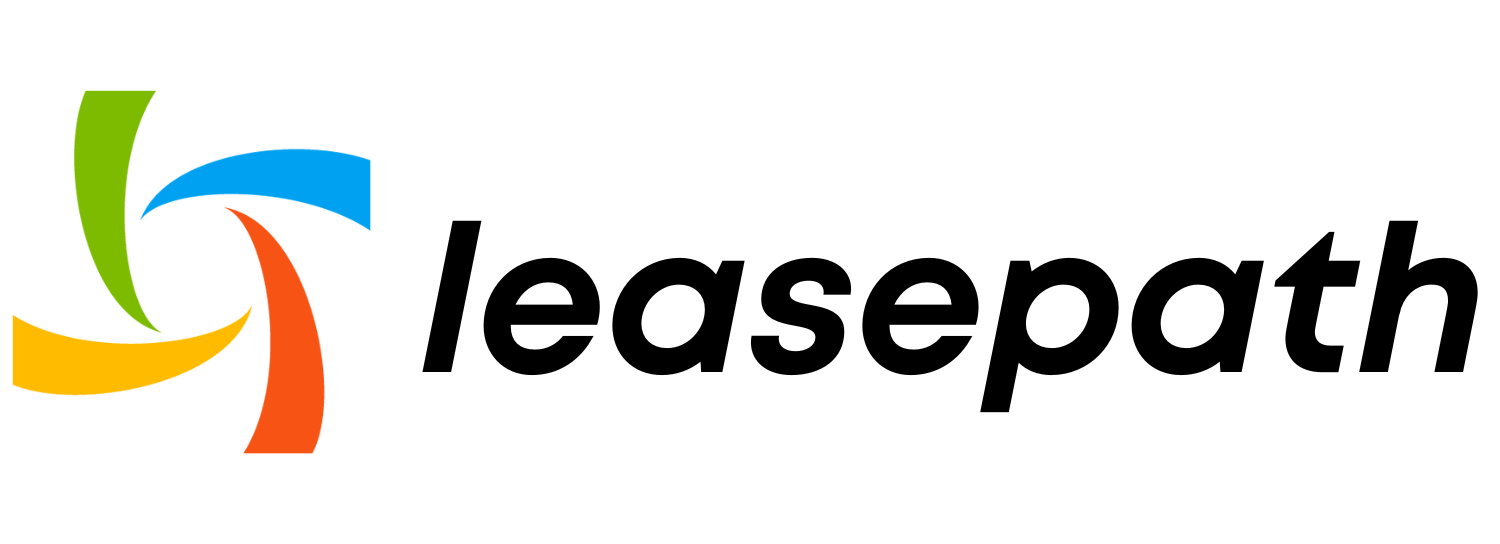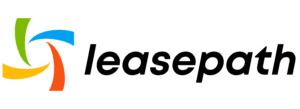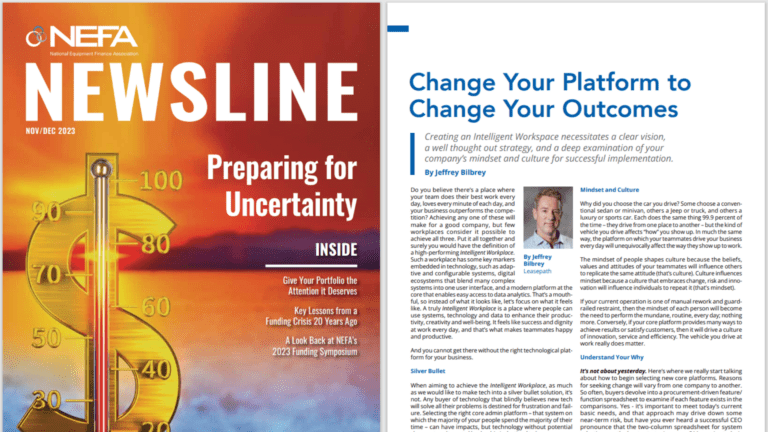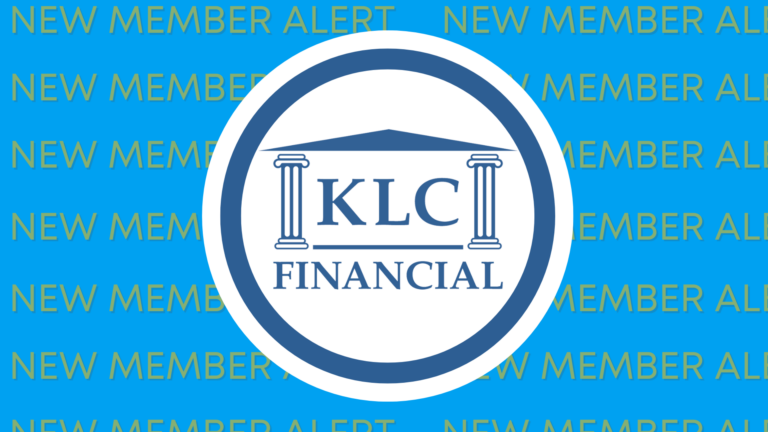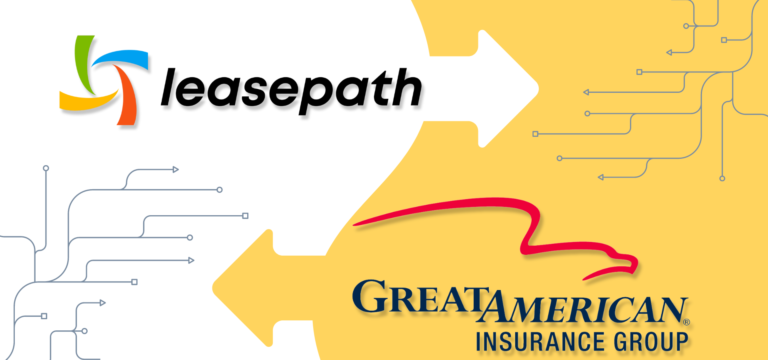Creating an Intelligent Workspace necessitates a clear vision, a well thought out strategy, and a deep examination of your company’s mindset and culture for successful implementation.
NEFA Newsline (Nov/Dec 2023 Issue) By Jeffrey Bilbrey – Do you believe there’s a place where your team does their best work every day, loves every minute of each day, and your business outperforms the competition? Achieving any one of these will make for a good company, but few workplaces consider it possible to achieve all three. Put it all together and surely you would have the definition of a high-performing Intelligent Workplace. Such a workplace has some key markers embedded in technology, such as adaptive and configurable systems, digital ecosystems that blend many complex systems into one user interface, and a modern platform at the core that enables easy access to data analytics. That’s a mouthful, so instead of what it looks like, let’s focus on what it feels like. A truly Intelligent Workplace is a place where people can use systems, technology and data to enhance their productivity, creativity and well-being. It feels like success and dignity at work every day, and that’s what makes teammates happy and productive.
And you cannot get there without the right technological platform for your business.
Silver Bullet
When aiming to achieve the Intelligent Workplace, as much as we would like to make tech into a silver bullet solution, it’s not. Any buyer of technology that blindly believes new tech will solve all their problems is destined for frustration and failure. Selecting the right core admin platform – that system on which the majority of your people spend the majority of their time – can have impacts, but technology without potential changes to culture and leadership is destined to be an expense, not an asset. The most successful business transformations underpinned by a platform change are also shepherded in by careful and willing changes to business processes, people and teams. Don’t buy technology and expect “it” to fix your business alone, otherwise you are guaranteed to be disappointed in your vendor (and it might not be your vendor’s issue at all). You must put in the effort.
Mindset and Culture
Why did you choose the car you drive? Some choose a conventional sedan or minivan, others a Jeep or truck, and others a luxury or sports car. Each does the same thing 99.9 percent of the time – they drive from one place to another – but the kind of vehicle you drive affects “how” you show up. In much the same way, the platform on which your teammates drive your business every day will unequivocally affect the way they show up to work.
The mindset of people shapes culture because the beliefs, values and attitudes of your teammates will influence others to replicate the same attitude (that’s culture). Culture influences mindset because a culture that embraces change, risk and innovation will influence individuals to repeat it (that’s mindset).
If your current operation is one of manual rework and guard-railed restraint, then the mindset of each person will become the need to perform the mundane, routine, every day; nothing more. Conversely, if your core platform provides many ways to achieve results or satisfy customers, then it will drive a culture of innovation, service and efficiency. The vehicle you drive at work really does matter.
Understand Your Why
It’s not about yesterday. Here’s where we really start talking about how to begin selecting new core platforms. Reasons for seeking change will vary from one company to another. So often, buyers devolve into a procurement-driven feature/function spreadsheet to examine if each feature exists in the comparisons. Yes – it’s important to meet today’s current basic needs, and that approach may drive down some near-term risk, but have you ever heard a successful CEO pronounce that the two-column spreadsheet for system selection was the key to strategic success? Measuring today’s features means you are only seeing yesterday and not looking into your future.
Future State Vision. Model your future state vision and declare how you want to win in the future. Is it new lines of business? New channels? Improved data access enabling machine learning and AI? Automation that lets the workforce be recast in higher intelligence roles? Reducing the bumps in your service chain to improve customer service excellence? Reduce costs by rationalizing systems and expenses? These are all part of a vision for the future, your vision.
Potential. In all reality, a better reason to buy a solution is to unleash a greater potential than exists today. You should consider whether the vendor partner can support future innovation and quick configuration to meet dynamic business needs. Can it integrate with emerging technologies? Does the vendor regularly provide accessible updates and new features? You must also assess the known unknowns of the future. We know that technology change accelerates every year, but we don’t know which changes will affect us. Therefore, it’s critical to choose a platform that has a track record of ushering in innovation instead of lagging behind with hopeful (and expensive) integrations.
Platform > Software
Software is yesterday. Now it’s apparent there’s a significant difference between software and platform, and if you want to change your business outcomes you really need to be looking beyond software. When you buy software, you’re buying something that is already a year or more old because it was planned two years ago, developed last year, delivered this year, and updates are difficult. Software stands on its own and does not consider the ecosystem in which it must interact.
Platforms enable tomorrow. The world of technology has moved considerably and “solutions” that are future proof should now sit on a reliable enterprise-grade cloud “platform” that is constantly evolving. Enterprise grade platforms like Microsoft Azure and Power Platform (or others like Amazon AWS) get upgrades literally every day. The platform manages infrastructure, uptime, redundancy, security and integrations so that you don’t have to. They provide not small changes, but massive leaps such as AI and ChatGPT Copilots. And the “software” built on them is constantly evolving with the rest of the platform. There is an inherent community of evangelists around a platform bringing diverse ideas, innovative thinking, and continuously available support from both inside and outside your industry. The platform provides an ecosystem of click-to-play integrations too because other vendors want to be in play on the platform. Since the platform is constantly evolving, it is automatically more future proof than the two-plus year-old software you bought yesterday and implement today.
If you want to change your future, stop buying software and start buying platform technology that enables exponential change instead of codifying your static capabilities. Ask your vendor if they live in a closed ecosystem of software coded components that are developed in-house, or if the overall solution automatically leverages the benefits of a greater platform ecosystem that changes even beyond the vendor’s coded solution, keeping your business at the forefront of innovation. Your investment into your future state deserves to be adaptive and do more tomorrow than you can ever envision today. This is why Platform > Software.
Mindset and Culture, Again
Let’s return to this idea of culture again because now you can see the relevance and relationship to your change of software or platform. Truly, the “car” (software, platform) your teammates drive at work every day affects the way they show up for your business performance and for customer service. Have a future state vision and acquire assets that enable you to go on that car ride that feels good every day.
To enable an Intelligent Workplace, hopefully you see that you need a mix culture, mindset and platform technology. If technology is the car your teammates drive every day, then it should inspire excellence and innovation every day.
We generally believe that we like stability. Let’s challenge whether that stability is a placeholder for status-quo. Instead, how about gentle, constant and certain evolution. If your core admin system was built on a platform that had continuous innovation, then stability can be replaced with surety because the platform will surely evolve even as it provides more opportunities and ideas every day.
If you want to change your business outcomes, you better start looking at platform technology.
Change Your Platform to Change Your Outcomes.
ABOUT THE AUTHOR: Jeffrey Bilbrey is Chief Executive Officer of Leasepath
